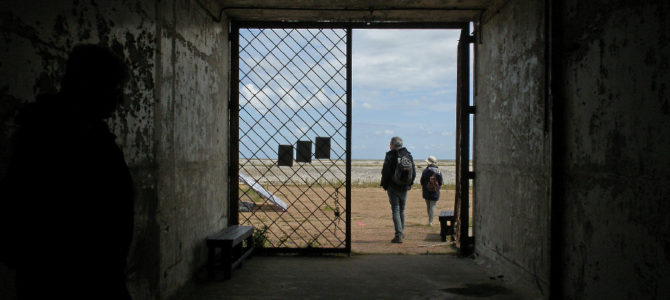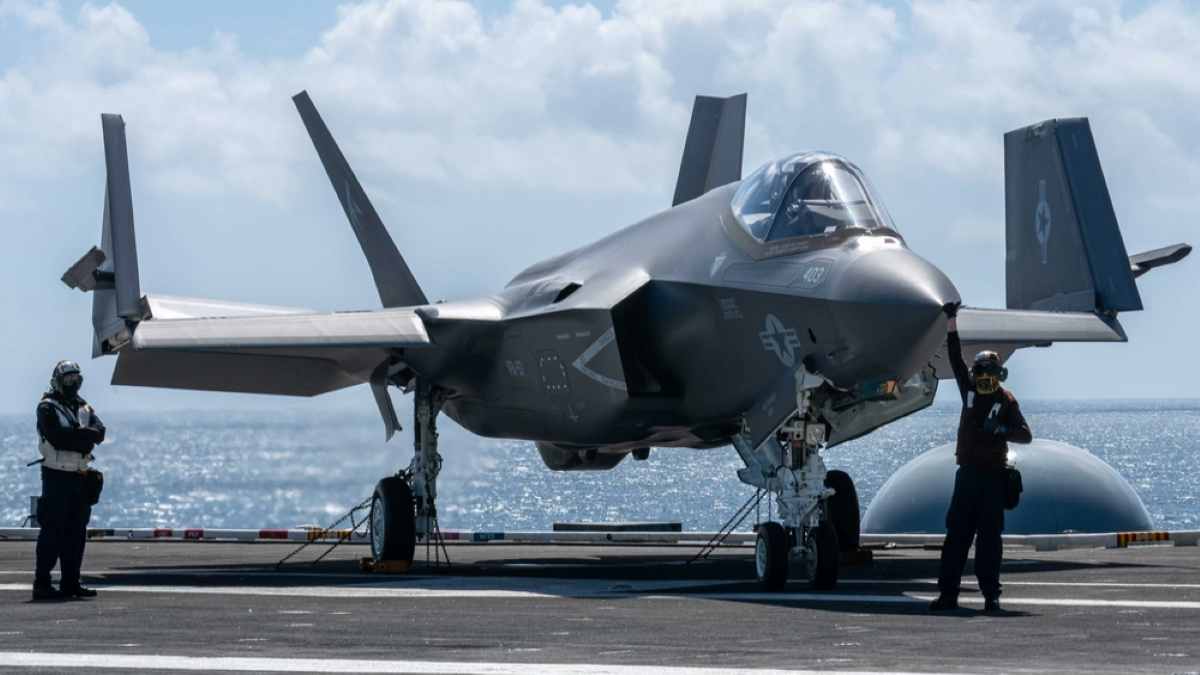
Every American president since Ronald Reagan has left office with fewer nuclear weapons in the U.S. arsenal and reduced the centrality of nuclear arms in American defense planning. But advocates of nuclear warfighting might have new reason to be optimistic that policy will swing back their way under President Trump.
According to a report in Politico, the Trump administration is considering returning to an idea defeated years ago in Congress, the construction of “mini-nukes” that could take out buried or heavily shielded facilities without doing a lot of damage to surrounding areas or populations.
Here we go again. This is a bad idea whose time has already come and gone, but with Trump in office, some of the nuclear warriors who have been waiting to put a stamp on U.S. strategy have quietly returned to the bureaucracy, and their ideas are just as bad now as they were 15 or 20 years ago.
The Pointless Nuclear Posture Review
The nuclear door is opening in the coming year because it’s time for another round of the pointless exercise known as the “Nuclear Posture Review” (or NPR), a full examination of the role of nuclear weapons in U.S. national security. It’s not that doing such reviews is inherently a bad idea, but if the last three—done in 1994, 2002, and 2010—are any indication, the result will be affirming the nuclear conventional wisdom along with whatever bumper sticker is important to the administration at the time.
In 1994, it was “hedging.” That is, the NPR conducted under Bill Clinton determined that we were doing everything we were supposed to do, but could do it a bit smaller, while hedging against any current or future threats. What was supposed to be a no-assumptions, top-to-bottom review ended up as a ringing endorsement of the nuclear status quo, a kind of Mini-Me of our Cold War strategy.
In 2002, the Bush 43 administration classified important parts of the NPR but let it slip anyway that the new wrinkle was to draw up plans for nuclear use against a group of smaller states—Iran, North Korea, Syria, and some other miscreants—while vowing to plunge tons of money into a “responsive infrastructure,” another way of saying that future threats would be dealt with by flooding Virginia’s 703 area code with consulting contracts.
The 2002 NPR was a flop, even among the people who were supposed to understand it. After a series of mishaps (including a B-52 crew accidentally flying nuclear weapons across the United States without knowing it), a blue-ribbon panel in 2008 led by former defense secretary James Schlesinger concluded that even the Air Force wasn’t clear about what nuclear weapons were supposed to do or why we had them. In the end, the Bush 43 NPR—which was mostly an artifact of 9/11—pretty much disappeared without trace, as it should have.
The 2010 NPR was much like its 1994 counterpart, in which all options were kept open while reaffirming Barack Obama’s commitment to a nuclear-free world. It kept the basic structure of our nuclear deterrent while wishcasting for a world in which we didn’t need nuclear weapons. From a “purely strategic point of view,” as political scientist Stephen Walt noted at the time, the 2010 NPR and its carefully hedged promises were “largely meaningless.”
This time, Trump has issued an order that begins: “To pursue peace through strength, it shall be the policy of the United States to rebuild the U.S. Armed Forces,” then calls for a United States nuclear deterrent that is “modern, robust, flexible, resilient, ready, and appropriately tailored to deter 21st-century threats and reassure our allies.” As opposed, apparently, to our current antique, fragile, rigid, delicate, unready deterrent.
It’s Not Just a Waste of Money, But Dangerous
What all this government-speak really means is: spend a lot of money on building a new generation of smaller nuclear weapons, and pay a lot of contractors to explain to everyone how to use them. This would all be bad enough, except that creating a more varied fleet of smaller and more usable nuclear weapons is itself a dangerous idea.
During the Cold War, the United States maintained a strange menagerie of nuclear forces, based on the assumption that we were outnumbered and outgunned by the Soviets and the Chinese, and might need to escalate to nuclear weapons because we’d be losing on the battlefield. What’s more, we wanted Moscow to know that we’d have no choice, and thus the Soviet leaders would be deterred from starting a war of aggression that would run a massive risk of going nuclear, and eventually destroying both the United States and the Union of Soviet Socialist Republics.
This was a risky strategy borne of existential necessity. The current drive to create smaller nuclear weapons then concoct a menu of options for using them, however, is a needless foray into discretionary first use, in the name of giving the president “flexibility” when in reality it would just add to the temptation to use weapons that should be ruled out immediately for any reason less than the survival of the United States.
This renewed obsession with using nuclear arms springs from two sources. One is purely a function of the military-industrial complex: there are a lot of companies and institutions that have been itching to see nukes become relevant again, and thus reopen a flow of contracts and funding that dried up after the Soviet collapse.
Nuclear Weapons Are Not Magical
The second issue, however, is more reasonable and pressing. U.S. strategists are understandably frustrated at the inability to translate America’s gigantic military power into a reliable deterrent against the shenanigans of Vladimir Putin in Europe, the risk-taking lunacy of the weird dumpling running North Korea, or the shrewd game of catch-me-if-you-can played for the last few decades by the Iranians. Military planners want to be able to offer the president a reliable way to squash an incipient threat, particularly from a nuclear program, quickly and completely. Nothing, the reasoning goes, can do the job like a nuclear weapon.
This belief in the magical properties of nuclear arms, however, is just so much wishful thinking. A small nuclear weapon is not going to deter Putin from seizing a chunk of the Baltics, no more than it will stop Kim Jong Un from destroying Seoul or Tokyo before we dispatch him to his maker. And the Iranians know—as do we—that no American president is going to throw a nuclear weapon, no matter how small, into the tinderbox of the Middle East.
These realities highlight the bigger problem with nuclear strategy that has plagued American thinking since the Cold War: too many strategic debates, when stymied, default to nuclear force as a crutch, a kind of dummy variable that balances difficult equations without making hard or costly choices. Is it expensive to keep a large force in Europe or Korea? No worries, we’ll cover the gap with nukes. Not enough air power to destroy an Iranian program if it rears its head? Nukes.
This is not strategy; it is a placeholder for strategy. If America is serious about deterring smaller powers and defending our allies in Europe and Asia, we need to increase the size of our conventional forces rather than tinkering with new kinds of nuclear forces. This would be expensive and take time, but it would be a far more reliable path than trying to buy a shortcut to deterrence with tiny nukes and Strangelove-like ideas about using them.
Whether all this gets past Defense Secretary James Mattis or survives into the new NPR remains to be seen. Unfortunately, the advocates for nuclear use finally have the one piece of the puzzle they needed: an administration led by a president who does not seem to understand nuclear weapons, and who is willing to let tough talk about the world’s most dangerous weapon take the place of a responsible strategy.









